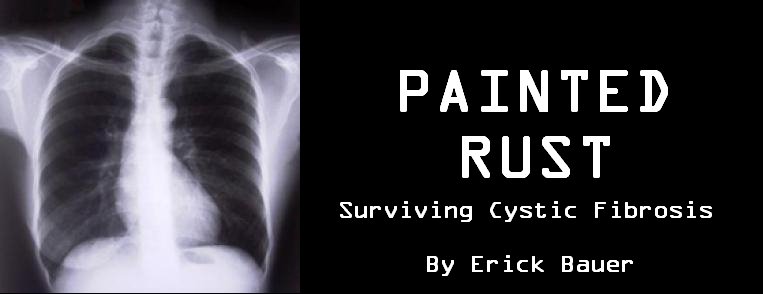
Well it has certainly been a while since my last post. Between school, work,
Friends For Life and the move into my new place, life has been pretty damn hectic lately! My inability to post was also directly related to the fact that I was stuck in a new house with no internet for nearly a week and a half – talk about feeling socially disconnected.
Nevertheless, the move is done and over with, the internet has been hooked up and life is beginning to regain some sense of normality again.
One of the first things I did after the
Bell technician left my house was jump on
Facebook to check a week’s worth of unread messages. After sifting through a plethora of evites, birthday notifications and embarrassing picture postings, I stumbled upon a message from a young lady who I did not recognize.
As I read on, I learned that she was a
Cystic Fibrosis patient and that she had recently read an article that I had published in a quarterly CF publication called
Circle of Friends.
The article was about a serious lung infection that I had suffered in the summer of 2007. From May until August, 2007, I battled a severe bacteria that dropped my lung function over 50 per cent and landed me in a hospital bed for a number of weeks. The article talked about the experience and how triathlon played a large role in my recuperation.
As it turned out, my new Facebook friend had stumbled upon the article and, as a fellow CFer, was inspired by what she read.
Her message talked about how she could relate to my article because she too was beginning to realize the potential limitations that CF can impose upon its victims. However, she also vowed to never let CF limit her ability to live a healthy, active, normal life.
Unfortunately, CF patients are not encouraged to associate with one another. This is because we often carry potentially harmful bacteria that can be fatal if transmitted to the lungs of other CF patients. Thus, in the interest of our health, we – as CFers – are encouraged to avoid contact with one another.
For year’s I have felt that this inability to socialize with other patients presents a real problem for those of us living with the disease. After all, who better understands the trials and tribulations of life with CF than a CF patient? I’ve often felt that, given the chance, I could make a difference in the life of other CF patients – just as they could make a difference in my life. Unfortunately, for as long as I can remember, the health risks associated with this kind of intimate contact made this dream rather unachievable.
That is, until now. The advent of social media and
web 2.0 has transformed the way that people communicate and connect. For CF patients, social media represents a way in which we can share, bond and unite in the fight against Cystic Fibrosis.
I was happy that my writing had, in some small way, made a difference in someone’s life. However, I was absolutely thrilled about the fact that I was able to talk with another CF patient in a way that never would have been possible ten years prior.
So, for all of you who may question the importance of social media, I ask you to consider this example. The internet offers us, as a virtual community, an opportunity to come together, to connect and to develop relationships that simply could not exist otherwise.






 The Canadian Cystic Fibrosis Foundation (CCFF) applauds the decision of the Carleton University Students’ Association (CUSA) on Monday night to continue its long-standing partnership with Shinerama. Last week, the Association voted to cancel the annual fundraiser at Carleton University. After many students expressed their concern over the vote, a second motion to re-instate Shinerama was put forth. At yesterday’s meeting, the new motion was passed, setting the stage for another Shinerama campaign in 2009 at the university. “The students at Carleton are leaders in the fight against cystic fibrosis,” said Cathleen Morrison, Chief Executive Officer of the Canadian Cystic Fibrosis Foundation.
The Canadian Cystic Fibrosis Foundation (CCFF) applauds the decision of the Carleton University Students’ Association (CUSA) on Monday night to continue its long-standing partnership with Shinerama. Last week, the Association voted to cancel the annual fundraiser at Carleton University. After many students expressed their concern over the vote, a second motion to re-instate Shinerama was put forth. At yesterday’s meeting, the new motion was passed, setting the stage for another Shinerama campaign in 2009 at the university. “The students at Carleton are leaders in the fight against cystic fibrosis,” said Cathleen Morrison, Chief Executive Officer of the Canadian Cystic Fibrosis Foundation.